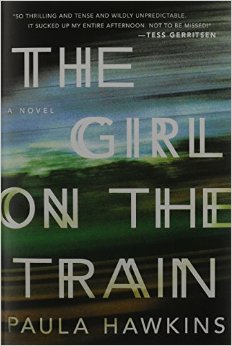Stream of consciousness narration is described as “a type of
fiction in which the basic emphasis is placed on the exploration of the
pre-speech levels of consciousness for the purpose, principally, or revealing
the psychic beings of the characters”. This form of narration places emphasis
on the thought pattern of an individual and immerses the reader in the
innermost thoughts of the character. Through this narration the reader is
exposed to the character’s emotions and thoughts in an unfiltered manner, thereby
adding depth to the character.
Through an intricate intertwining of realism and stream of
consciousness, Naguib Mahfouz establishes and explores his main character Said
and his perception of reality in the novel The
Thief and the Dogs. Mahfouz employs stream of consciousness narration in
order to giving the reader insight into Said’s inner conflicts. To quote one of
our readings that I think put it best:
“Access to Said Mahran’s internal experiences enhances the reader’s
understanding of his external reality.”
Stream of consciousness narrative also gives the reader a
clearer idea of the emotional stability or instability in the case of Said
Mahran. In the first chapter of the novel Said ponders that its likely his
daughter does not know anything about him however, when faced with her eventual
rejection his reasoning and logic become irrational as he feels that Sana
rejected and betrayed him. This reaction seen within Said’s thoughts hints at
how he may react to similar situations later in the novel. When Said ventures
to find his old friend and mentor Raush and discovers that his socio-economic
status has been elevated, he once again jumps to hasty conclusions. In this
interaction between mentor and student, Said’s previous feelings of paranoia
and distrust resurface as he feels that Rauf has also betrayed him. Mahfouz’s
style of an alternating narrative voice prompts the reader to establish a
closer connection with Said and evokes a deeper sense of sympathy than what may
have been achieved through a simple third or first person narration. However as
the novel progresses, this sympathetic connection is tested as Said’s thoughts
become irrational and his actions become morally unacceptable to the reader.
While this narrative technique does give the novel a unique
flair, it also comes with some limitations. The reader’s perception of
characters and events can become highly skewed due to the biased portrayal in
Said’s thoughts. The reader is never given the opportunity to experience the
story from another character’s perspective and therefore their perception of
reality within the novel is tainted by Said’s obvious and strong bias. As seen
in the novel, it can be difficult to attain an unbiased perspective of certain
characters such as Nabawiyya whom Said describes as “that woman who sprang from
filth, from vermin, from treachery and infidelity”.
Both Mahfouz and Achebe utilize a distinct form of
storytelling in their novels. Mahfouz uses stream of consciousness narration
which presents the reader with a highly subjective perception of reality within
the novel. While there is some use of an unbiased third person narrative voice,
the reader is generally left to establish events and characters through the
eyes of Said Mahran. On the other hand Achebe employs third person narration
throughout his novel which creates a different effect for the reader. This
allows Achebe to present an unbiased view of the story and furthermore allows
the reader to make their own moral judgement instead of relying on that of the
narrator or a specific character. Achebe
makes it very clear that Okonkwo is a flawed character through the unbiased
narrative form. However, the narrative technique used by Mahfouz does not
necessarily highlight the flaws of Said but instead leaves the reader to
establish this for themselves.









Your post provided a profound understanding of the novel and Mahfouz's unique use of stream of consciousness when portraying moments in the character's lives. I agree with you on the fact that this particular literary technique gives the reader success to the character's deepest thoughts and emotions. Overall, very well written. You have a way with words Tyler
ReplyDeleteI enjoyed your post it was interesting how you looked at how Mahfouz and Achebe use the tool to "utilize a distinct for of storytelling". Personally I feel this way establishes an intimate connection between the reader and the chaercter. Additionally I liked how in TFA you mentioned achebe presents Okonkwo as "unbiased" clearly depicting he is a flawed charecter, where Mafouz does not really establish this letting the reader interpret whether he is flawed or not. This is a good comparison for paper 2. Good job williams.
ReplyDeleteGreat post! I like how incorporate the flaws in okonkwo vs said. Additionally understanding both novels are centered around realist fiction, it is great to see a distinct understanding on how the context influences the stories. Stream of consciousness is great when exploring it in Said because his language is coherent therefore it is an effective tool. Overall nice post very enjoyable
ReplyDeleteVery nice and detailed. I like how you stated that the technique gives us insight into all the characters and let us understand emotions. Your comparison to Achebe was also effective as I liked what you said about portraying Said as a flawless person.
ReplyDelete